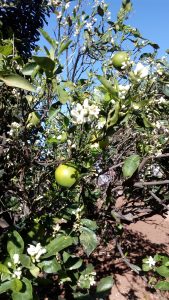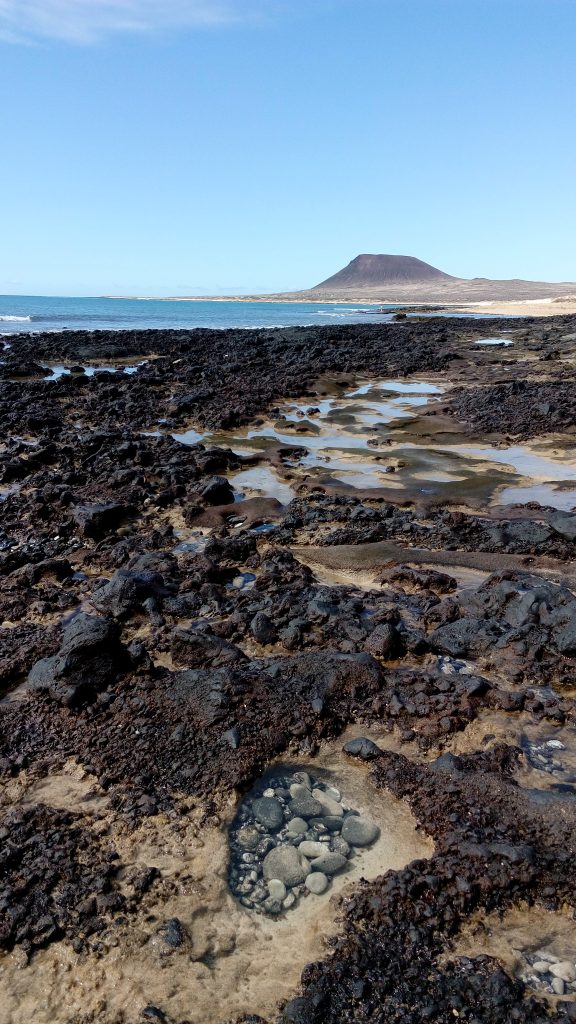Greetings, once again. Spring is here; or is it?
— We might intuit a period of transition in the balance of forces as we pass the Equinox. Everything is in movement, and the seasons are an expression of this reality. Healing follows nature too. But I want to mention something else.
I am happy to be reminded by the cycles of Nature that, while everything has its time, the whole process is as singular as it is plural. Consciousness of the unity behind all the changes we experience – both in nature and in human affairs – helps us to keep everything in perspective. We cultivate what Buddhist philosophy calls complete view, and develop appropriate action as “skilful means”. Here perhaps, presently manifesting in the appearance of new shoots and spring flowers, we see our own earlier work of preparing and cultivating the ground, yet here too we might observe a natural phase of simply letting things lie to rot and decay.
The famous Zenrin couplet:
Sitting quietly, doing nothing; Spring comes and the grass grows by itself.
Some new projects of my own are emerging and flourishing, but I know that the ground was prepared long before. The seeds of ideas which have spontaneously sprung to mind at some point are just now taking shape in specific plans. If my efforts are well directed and conditions remain favourable, something appropriate and good will doubtless emerge, but I will likely have to be flexible and accept some changes, or perhaps even an entirely different outcome from the one I first envisaged. (Japanese: Myoto – accept everything).

Manifesting the conditions, just so.
Nature herself, being totally bountiful and impartial, does not distinguish between cause and effect; favouring neither desert nor sea. Everything is both necessary and equally empty of purpose. We humans can make whatever we want of the situation, but by and large we go on distinguishing one thing from another according to custom and habit.
Here below is a previously unpublished essay I wrote a while ago on Form and Emptiness in relation to therapy and the question of healing. Emptiness, Sunyata in Buddhist thought, is a central consideration in Seiki. Meditative practice, nowadays often represented as mindfulness, is supported by a complete philosophy. Meditation has active and contemplative aspects. I am inspired by the Heart Sutra, one of the most succinct and beautiful Buddhist texts.
SEIKI
MOVEMENT, FORM AND EMPTINESS – DISCOVERING THE HEART OF EXPERIENTIAL HEALING
Massage is one of the most ancient forms of healing, and from simple origins has given rise to all manner of more sophisticated and precise systems of manual therapy. Many manual therapies exist, traditional and contemporary. Some are well integrated with formal medicine and require quite a lot of training and specialised knowledge, while some are taken for their more general benefits. We can recognise that to relax and feel good in one’s body brings emotional and psychological benefits as well.
Many people have received massage treatment or physical therapy of some kind, but there are very many of us who have not. Massage is also used in all societies as a form of relaxation, and to give pleasure, but precisely because it is directly connected to our basic human instincts and needs for intimacy it is inevitably surrounded by mystery and taboo. Each society will have different ground rules and approve of certain circumstances when touch for pleasure and touch for health and healing may be shared, but historically there have been many prohibitions and many grey areas still persist, so we see that even in contemporary society, massage and safe touch conduct is not at all integrated in our education and people suffer from doubts and difficulties as to what healthy touch might be and how it can help us to heal.
When we train in one method or another, we adopt the knowledge and we become the therapist.
As a patient or client in another’s hands, we submit ourselves to the treatment and its hoped-for benefits. The touch therapies connect us powerfully with our bodies, sometimes putting us into altered states and changing our mood faster than we realise. Physically we can also pass through moments of pain and resistance, but we submit to the process, believing in its benefits. Often we experience pleasant and relaxing sensations that can also send us into a kind of soporific trance. Our emotional state is also stirred, and this may be acknowledged as fundamental to our recovery. We accept all of this as we look for relief from our illnesses and stress. The skeletal system and all the various soft tissues are linked via the nervous system to the inner organs, so manual therapy will influence the physiological function of the entire system, but many of our nervous functions are autonomic and unconscious, so we rarely experience with any precision the way in which physical techniques and adjustments work.
It could be that more subtle interventions are required – some subtle bodywork therapies offer ways for the client to become more conscious of the patterns behind the various diseases that trouble us. But usually the therapist is still regarded as the one with the training, the knowledge, and the power.
It is uncommon to find a situation where that power is openly shared or surrendered from the beginning. That would be an entirely different approach.
But a treatment situation can be entered into from a different place. This is the space envisioned in Seiki as a healing space, where Healing can be un-owned without being disowned, and jointly or individually avowed through experience. This healing space can be consciously set up at will by one, two or more people, for protection, practice and guidance.
What is it to feel Nature acting within us?
Outside there are gardens and flowers, cultivated fields, woods and streams; beyond them the wild, the mist upon the mountain, the open sea, the wide eternal sky.
– – – – And inside? It is possible to feel our own resistance to an inner impulse and ask, “Why am I holding out against my own body?” “How has this tension and conflict taken hold?”
Here and now I am in safe hands, in a safe place, at the threshold of a transforming event, so why the fear?
When basic trust in life is not established, belongingness on this earth is in also in doubt.
The mind compelled by all manner of thoughts and ideas has no way to be free.
But what or who am I defending? And who am I against?
Let’s just look around inside.
There is a time between every exhalation and the next inflow of breath, when effortlessness and surrender can be practiced…. To breathe out fully is an emptying. In letting go completely there is quiet, stillness, and then the body complies with its inner design, to receive, to be filled, to continue as it began. We find that life is simply waiting on us, serving us.
In exercise we can explore effort of every kind, experience the limits, and find conscious accommodation with whatever circumstance applies. Who is responsible for this? Who brought me to this?
Did you ask to be born? Your mother did the hard work. Some struggle is worth the effort; much of it is a complete waste. Work but don’t struggle too much.
Use life well, enjoy and be grateful, you are it; we are it.
Were you raised in the country or the city? Do you speak one language or many? Are you rich or poor? Have you been through the war? How, then are you living now?
Solo – breathing body-mind
Here, now, in Seiki practice, we set up a useful, spacious situation; we have discovered that this is possible. We stop, settle, breathe, take a good look around, inside and outside, and feel our way. Just standing, sitting, lying down, we notice the breath enter and pass – through the nose to the chest and belly – without effort, and leave again the same way. We focus on the hands, imagine breathing through the fingers and palms, into the whole body and out again; or we breathe along the spine*. There is always some movement, forward, backward, sideways and through, it doesn’t matter. Allowing this, we become sensitive. Limitation and pain become clearer, but we are patient and we never force ourselves.
or together
We can share similar moments in life with others. If we have a room, a cushion or a borrowed blanket on the floor, or a rock to sit on in a quiet glade, by agreement we can offer respectful touch, as guest and host share a very intimate human contact that is also spacious and without demand. We accompany each other in this mutually protected situation, in either role, listening and learning without hurrying to judgement, touching or not touching; doing with no idea of doing.
Observe and follow the breath as it arises and flows, giving space and attention with the hand
Touching the body here and there, guided by its very form and position, and our own avowed commitment and sensibility. Many other helpful influences will show up here if invited.
Once again, stop.
Are we simply guiding, or driving this process? We must always be able and willing to pause, and to stop this crazy experiment the moment it gets out of hand. Return to zero. Nobody who is somebody can be in the driving seat of this vehicle.
The Sutra: Form is no other than emptiness; emptiness no other than form. Form is only emptiness; emptiness only form. All things are the primal void – –
A recognition occurs that, as this doing and not-doing continues, ownership is beside the point. An invitation is received and accepted; a gentle discipline becomes necessary, an experiential learning begins – a harmony of hand and heart. Life continues.
Beginnings, and endings, are good to observe
As the unfolding stories, attended and heard, release their power
As homeless and motherless we go, orphans in time.
Emptiness is the way and the destination.
And people on the journey are so surprised and happy with such a discovery.
As putting on hat and coat we pass back into the conventional world.
PL.
*these practices, called Gyoki or Seiki Chyu are described elsewhere on this site.
